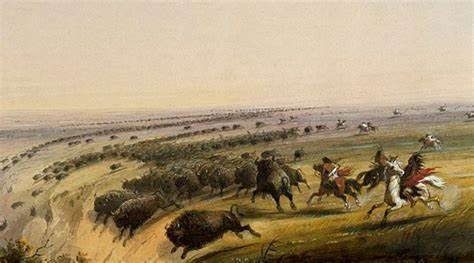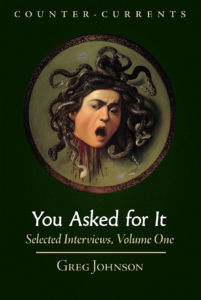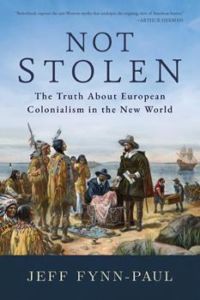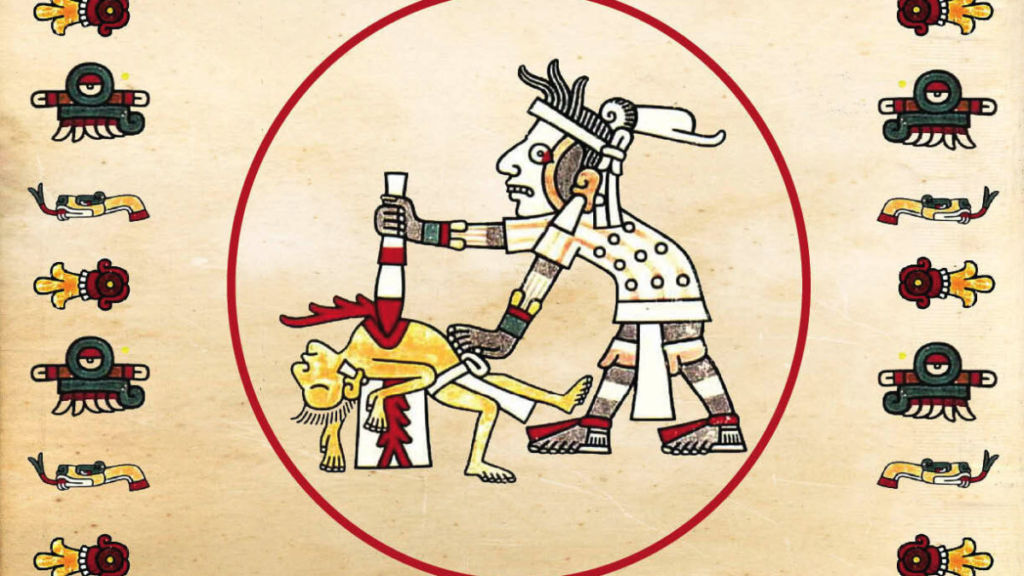The Stolen Land Narrative
Jeff Flynn-Paul
Not Stolen: The Truth About European Colonialism in the New World
New York-Nashville: Bombardier Books/Post Hill Press, 2023
. . . [N]early all the stereotypes about American Indians that the Left holds dear are traceable to the naivete of the 1970s progressive movement. Almost all these stereotypes arose in white, middle-class American households; they generally reflect liberal talking points such as environmentalism, anti-capitalism, and the peace movement. As such, they are anachronistic projections not firmly grounded in real historical analysis. — Jeff Flynn-Paul
The Year of Floyd, 2020, marks the point in time when anti-white Cultural Marxism, which had hitherto been circulating unseen in academia, ascended to become the top social narrative. In an instant, all past white accomplishments became immoral under the presuppositions of this Jacobin-derived philosophy. The quickness of the shift from across-the-board support for white achievement to anti-white hostility is astonishing. In 2016, presidential candidate Bernie Sanders said of Mount Rushmore:
This is a monument to four great presidents. This is America at its very best . . . just the accomplishment and the beauty, it really does make one proud to be an American. (pp. xiii-xiv)
The comment was well-received by the establishment media that was with him.
After the Year of Floyd, the national narrative shifted to one which claimed that the whole of the United States is built upon stolen land. Leftists and some Indian organizations have argued that Mount Rushmore should be treated like a “holocaust museum.” Additionally, the stolen land narrative claims that Europeans took possession of the Americas after a genocidal conquest initiated by Christopher Columbus. This idea ultimately invalidates the societies that have similar histories to that of the United States, such as Canada, Costa Rica, Uruguay, Argentina, Chile, Australia, and New Zealand. The idea that the white nations of the Americas are illegitimate first appeared in academia in the1970s, when anti-white professors began publishing “stolen land” polemics. The most-widely read of these is the late Howard Zinn, who was Jewish.
Ideas hitherto circulating in academia unseen
Zinn wrote a Cultural Marxist book called A People’s History of the United States (1980). As Flynn-Paul writes, “Zinn not only trashes Christopher Columbus and all who sailed in his wake, he clearly sets out his Marxist vision of the world, which is perpetually divided into two opposing classes of conquered and conqueror” (p. xix). The opening lines of Zinn’s book echo, nearly word for word, the first chapter of The Communist Manifesto.
Other activists, such as Ward Churchill, have jumped on the stolen land bandwagon. Churchill claims to be part Indian, and notoriously called the victims of 9/11 “little Eichmanns” — implying they were guilty of genocide simply by doing ordinary office jobs. There is also Charles C. Mann, an anti-Western propagandist who wrote 1491: New Revelations of the Americas before Columbus (2005). In this book, Mann argued that Europeans deliberately carried out a policy of genocide in the New World after Columbus’ arrival based on the postulation that there were 100 million people living there and that this number then dropped significantly. And in Australia, Patrick Wolfe (1949-2017) established the field of Settler Colonialism Studies, which holds that European settlements and social systems in the New World were exceptionally cruel. Wolfe’s ideas are an outgrowth of the works of Edward Said, who was a Palestinian who wrote negatively about European colonialism in the Middle East.
There was no genocide
The first question is, was there really a genocide of Indians in the New World? Only two places in the Americas in 1492 had high populations: Central Mexico and the northern Andes. Many Indians still live in both places today, and Mexico continues to host large populations who still speak native languages.
Neither the Incas or the Aztecs ever carried out censuses of their populations, so no definitive numbers can be established, making claims of population declines after the arrival of the Spanish difficult to verify. Claims that the Spanish killed millions of Indians in Hispaniola are easy to disprove, however. The island of Hispaniola is half the size of England, and its population was not engaged in the intensive farming that the English were circa 1500. Given that England’s population was around two million at the time, it is highly unlikely that Hispaniola’s population had reached a million souls by then considering the fact that the island was mostly covered with forests, and Indian farming practices didn’t include draft animals, the plow, or an abundance of cereal grains.
Many Mexicans today are of mixed European and Indian ancestry, further proving that a deliberate genocide didn’t take place. Even the Spanish conqueror of the Aztecs, Hernán Cortés, took an Indian woman as a mistress. The woman, popularly known as La Malinche, was a slave woman who had been given to the Spaniards as gifts. This was a common practice among Mexico’s Indians: They lived in a patriarchal society where captured women were enslaved and traded like property for diplomatic reasons. Cortés recognized La Malinche’s intelligence and used her as a translator when dealing with his allied tribes. Ironically, Cortés implemented some empowerment of Indigenous women in his career.
The story that Christopher Columbus immediately planned to enslave the Indians he encountered on his first voyage is false and comes from a mistranslation of the first reports he wrote upon reaching the West Indies. Columbus rather said that the Indians would make good subjects of the King and Queen of Spain, not slaves. In fact, when Spain’s Queen Isabella learned that some of the American Indians were slaves, she paid a ransom in order to release them. Indeed, the stories of mistreatment of Indians by the Spanish come from the Spanish themselves. Polemics were written by Spanish clergy to oppose such practices.
European guidelines on who could be made a slave came down to several easy-to-understand rules. Christians could not be enslaved, but Muslims and pagans could. As a rule, however, there were few Muslims enslaved. Of the pagans — i.e., American Indians and sub-Saharans — Indians could only be made slaves if they were part of a tribe that practiced cannibalism. Sub-Saharans were commonly made slaves because African society already practiced slavery itself, and the trade in African slaves had already been fully developed by Arab and African slave traders long before the Europeans started their colonial projects.
As far as claims of cultural genocide by the conversion of Indians to Christianity, this also misunderstands what was really going on. Forcible conversion from one religion to another was already being practiced by the Indians themselves before the Spanish arrived. The Aztecs had converted their subject population to their own religion, and even sacrificed captives to appease their gods. The Catholic friars who went to the New World blended their customs with those of the natives by means of incorporating the old gods as saints, as was done in Europe, and they were pleased if the Indians were just able to recite the Lord’s Prayer. Dedicated individual Christians in Mexico came later, and the phenomenon involved no compulsion.
It is also unlikely that the Spanish intended to fully conquer the New World when Columbus set out. The model Columbus was following had already been established in the Old World. In Columbus’ native Italy, the various city-states created trading forts along the Black Sea coast, but did not settle the area. Only after the Indian populations started to collapse — from disease, rather than outright conquest — did settlement of the Americas begin to take place.
In North America, by contrast, the English colonists arrived two centuries after the Spanish, and they settled in an area which had always had a low Indian population, and the population had been further reduced by disease before the English arrived.
Warfare and economics
Columbus’ arrival did not alter Indian society from being peaceful forest-dwellers to desperate Indian fighters forced to do battle with whites as well as other Indians. The pre-contact social system in the Americas had always been one of war of all against all. The Iroquois, for example, carried out actual genocide — using European weapons — upon many of the tribes around the Great Lakes in the late seventeenth century, before Europeans settled the area.

You can buy Greg Johnson’s Truth, Justice, & a Nice White Country here
Many of the Indian tribes, including the Hopi, also practiced cannibalism. Whenever possible, Indians would slaughter defeated tribes to the last man. When the Europeans arrived, they set up a system whereby, after they fought notable battles with the dominant tribes, the colonial rulers had a monopoly on organized violence. As a result, the Indians were free to expand their gardens and use European tools to their own benefit. The missionaries, backed by soldiers, brought peace and order.
There is also a contingent of sub-Saharan authors such as Ibram X. Kendi who claim that the Indians — or more expansively the “BIPOCs” — were living in the sort of economic paradise that Marxist economic dogma claims is possible. But this is not the case. The Indians were practicing economics that were in line with the laws of supply and demand and were already subject to market forces prior to European contact and settlement. Nonetheless, these societies were extremely poor simply because they hadn’t yet entered the Bronze Age.
The Aztecs and Incas’ level of civilization in 1500 was approximately the same as that of the Sumerians in 3000 BC, but they lacked metals. The Sumerians and Aztecs both built pyramids and understood astronomy and mathematic principles, but the Sumerian advances were built upon for thousands of years in Europe. The Aztecs didn’t have enough time to catch up before the Spanish arrived. And outside the Aztec and Incan societies, none of the Indians elsewhere were especially advanced. In North America, most of the Indians were hunter-gatherer nomads, other than in a few locations, and they typically lacked even the knowledge of gardening.
Land and the environment
The Europeans had technology that was worth selling land to acquire. The Dutch famously purchased Manhattan Island with a few “trinkets” that were worth 60 guilders, which is around $1,000 today. The current value of Manhattan Island real estate is considerably above that now. Thus, this trade seems like an enormous steal. But at the time of the transaction, the Indians didn’t have beads, knives, axes, or any of the other things they received in the trade. As far as they were concerned, they were giving up part of an undeveloped, mosquito-ridden island which they had little use for. They were also gaining access to trade with the Dutch for more high-tech items, including firearms.
The numbers of Indians were always small in North America, and they grew even smaller due to disease shortly after the arrival of the Europeans. In the American colonies, the white population expanded rapidly. By 1820, census counts show that the ratio of Indian to non-Indian numbers was roughly 100:1. This is the same ratio as today, indicating that the population has been stable for two centuries.
The number of Indians remained steady in the nineteenth century, in part because there were policies enacted by the United States government to protect them from themselves and others. Nonetheless, Indian ownership of land decreased while white ownership increased. This was due to the laws of supply and demand. As hunter-gatherers, Indians had little use for parcels of land, while white farmers valued them very highly.
Then there is the question of the environment. The story that Indians were outstanding stewards of the land and the ecosystem is likewise wrong. The Indians didn’t use “every part of the buffalo,” as is often said, because in some cases, such as when the beasts were driven off a cliff, there were too many slain bison for a tribe to process. Indians also didn’t have a market for items such as glue, soap, hair, and so on. It was the meatpacking factories in Chicago and Green Bay which used every part of the animal they butchered.

Indian hunting practices were wasteful. They would have hunted the bison to extinction on their own when they acquired advanced rifles.
In more recent times, Indian tribes have been exempted from the hunting restrictions others must abide by. In the 1980s, attempts to increase the stock of walleye were undermined by the Ojibwe tribe’s right to hunt and fish in their “former” territory. The Ojibwe overfished the area, and declining walleye numbers were conveniently blamed on “climate change.” Indians in other places can likewise overhunt game, such as seals.
The Plains Indians were conquered only after the bison were hunted almost to extinction by white Americans. But with the Indians’ acquisition of high-powered firearms, it is very likely that they themselves would have overhunted the bison. When the Indians originally arrived in the Americas from Siberia across the Bering Land Bridge, they hunted every large animal they came across to extinction. The bison and other animals were preserved by whites; the Nordicist Madison Grant was chief among them.
Race
When Europeans arrived in the Americas, they didn’t recognize the full nature of the differences between whites and Indians. They thought that all humanity was descended from Adam and Eve. In 1400, Europeans only saw other Caucasians. Even many of the Moors have blond hair and blue eyes. The main social differentiation that Europeans recognized was between nobility and commoners. Pocahontas and John Rolfe’s marriage was therefore only shocking to the degree that Pocahontas was a “princess” and Rolfe a commoner.
It wasn’t until after 250 years of contact that the white scientific and political elite recognized that races were real and distinct and possessed sets of traits which were different from each other. The Indian tendency to drink to excess, for example, is due to the different evolutionary pressures Indians experienced.
The Founders

You can buy Greg Johnson’s You Asked for It here
The Leftist “stolen land” narrative has a contradictory element related to America’s founding within it. On the one hand, there is the idea that the Indians influenced America’s political development. The narrative points to the “constitution” of the Iroquois Confederacy, and claims that the US Constitution is based upon it. The other narrative is that the Founders hated Indians.
The idea that American political theory is based on Indian governmental practices is based on only a few historians, two of whom are Leftist ideologues. The theory that the US Constitution is based on the Iroquois Confederation originates in a biography of the second Chief Justice of the US Supreme Court, John Rutledge, that was published in the 1940s by John Barry. It describes an occasion when Rutledge read a parchment referring to the origins of the Iroquois Confederacy at the Constitutional Convention. This was seized upon by two Leftist writers, Bruce E. Johansen and Donald Grinde, who went on to claim that the US Constitution itself was appropriated from the Iroquois Confederacy.
These claims are simply not true. The constitution of the Iroquois Confederacy was never written down, and was thus subject to errors in oral transmission and huge varieties in interpretation. The philosophy of the Founders came from the works of the Greeks, Romans, and John Locke. The claim of Indian influence is simply the result of anti-Western malice. But the idea that the Founders held an anti-Indian bias is mostly related to the fact that some Indian tribes were attacking whites along the frontier, and the Founders believed that the British government was complicit in it.
The nineteenth-century clash
Throughout the nineteenth century, whites and Indians indeed clashed violently over a large part of North America. But most of the interactions between whites and Indians at involved trade, education, and commerce, not war and bloodshed. Additionally, the US government often paid enormous sums and provided goods and services to the Indian tribes. Land transactions between whites and Indians were taken very seriously by white courts.
Professor Fynn-Paul pulls his punches regarding the Indian Wars. In many cases the Indians fought in an irrational way and attacked non-combatants. The Sioux War of 1862, for example, was started by Indians who called their Chief a coward after they’d killed a family. A generation later, the Ghost Dancers were even more irrational than they.
Resistance to Cultural Marxism
American Indians became a global cultural icon in the 1970s. Southern California was settled by Midwestern homesteaders who were one generation removed from the white-Indian conflicts on the Plains. They also arrived just as the movie industry was taking off, and their family stories became Hollywood’s stories — Westerns in particular.
By the 1970s, actual stories of Indian atrocities against whites were no longer in living memory. Hollywood screenwriters gradually began to turn the Indians into noble antagonists. Good storytellers began to give them dialogue critiquing American society, Indians thus became peaceful theologians, environmental stewards, and wise elders. Those influenced by these movies and TV shows went on to create a false and unbalanced historical narrative which is delegitimizing the very existence of American culture and that has been seized upon by the anti-white Left.
Professor Fynn-Paul ends his book by pointing out that the United States is the central country in the Western democratic order, and should it succumb to delegitimization and collapse, autocracies such as China will take its place. The “stolen land” narrative actually has the potential to delegitimize institutions, and could therefore have real-life consequences. In Canada, hysteria over alleged “mass graves” of Indian children created a rash of arson attacks upon churches and statements of atonement from the Canadian government. Delegitimization is a serious threat, indeed.
This book offers a more balanced historical story of the European settlement of the Americas. It nevertheless returns to the ideal of color-blind conservativism – and as such, it misses the point that the idea of America as a “stolen land” is in fact a deliberately-crafted metapolitical weapon to be wielded against whites.
* * *
Like all journals of dissident ideas, Counter-Currents depends on the support of readers like you. Help us compete with the censors of the Left and the violent accelerationists of the Right with a donation today. (The easiest way to help is with an e-check donation. All you need is your checkbook.)
For other ways to donate, click here.






